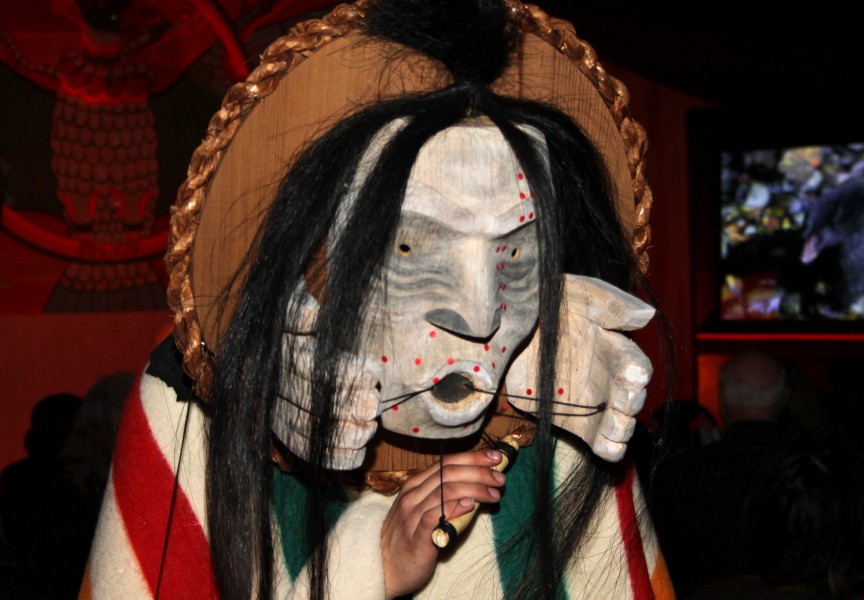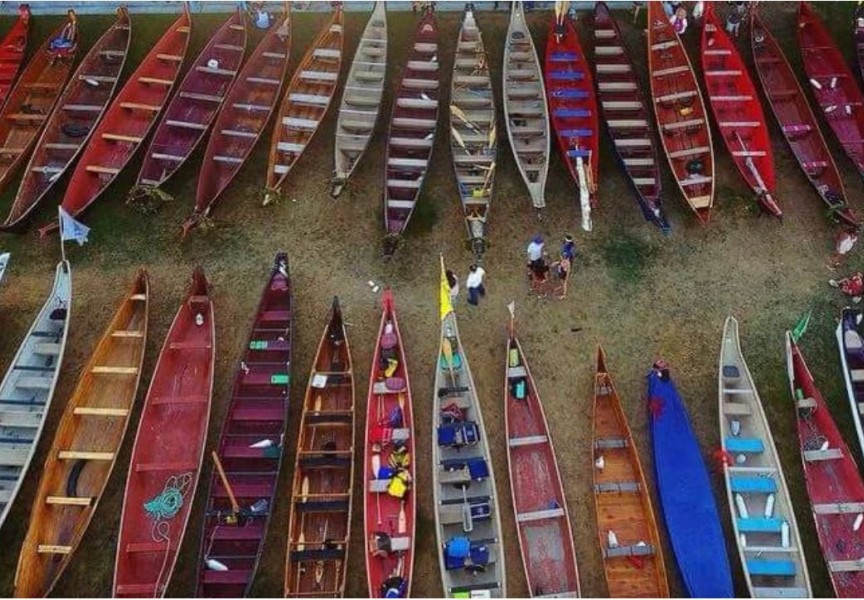If you follow the sound of rock music around Vancouver Island University’s Shq’aphut aboriginal gathering place in Nanaimo, it will lead you to two carvers working around a large red cedar totem in the making.
George Hunt Jr. is Kwakwaka’wakw with roots in the Nuu-chah-nulth Mowachaht Nation through his late grandmother Emma Billy-Hunt. Qwaya Sam is Nuu-chah-nulth from Ahousaht First Nation with roots in Hesquiaht and Tla-o-qui-aht. They are working among piles of thick wood chips, starting to shape the totem pole – one of three, in total – that will represent the Island’s first peoples for decades to come.
For the past few months, Hunt and Sam have been shaping the log to make a canvas for their carvings, which will likely include a Nuu-chah-nulth mask, a thunderbird and the first whaler.
Hunt said the shaping process took a bit longer than usual, partially because the carvers decided to use traditional methods instead of power tools, and partially because of the summer’s heat wave.
“We spent a lot of time using old school axes,” he said. “For me personally it was very rewarding.”
Hunt comes from a royal lineage and a long line of carvers. He said the experience allowed him to connect to the cedar in a way he couldn’t have otherwise.
“It’s kind of ironic because I’ve been pushing [to use modern tools] since I was 12 years old,” he said.
“But this is in my heart. And now I’m finally ready to put something on paper.”
Hunt carries the traditional chief’s name Nagedzi-Yathlawalth, passed down from his grandfather Chief Tommy Hunt to his father Chief George Hunt Sr. and then to George Jr. He has been carving for as long as he can remember, with his family keeping him connected to his culture while growing up in an urban setting.
He jokes he was “initiated” into it as a child when he tried to carve for the first time and accidentally cut himself.
Sam has been carving for about two decades, but said his path is a bit different than Hunt’s. Sam has a Western education, having studied at both VIU in Nanaimo and Emily Carr University.
“I’ve worked on a couple poles in the past and am very excited to be given this opportunity,” he said. “This is what all artists dream about, to work on a pole.”
Sam’s parents are Stanley and Kate Sam. His grandparents on his father’s side are late Paul Sam and Alice Curly. His grandparents on his mom’s side were Tla-wish Thomas Lucas and Katherine Lucas.
The totem project is especially close to Sam because he is giving something to future students that he didn’t have as an indigenous student studying at VIU one decade ago.
“I didn’t know where the aboriginal gathering places were. I had to search around,” he said.
“I didn’t feel like I really fit in at the beginning and had to search out other First Nations people. Now, coming back 10 years later, I see this gathering place. It’s like I’m becoming whole.”
Sam and Hunt agreed that, even though the project is student-led and neither of the carvers is making much money for their work, the real reward will be in creating something that will represent Nuu-chah-nulth-aht for a long time to come.
Sam, who has two children that go to VIU, said it’s a first for him to collaborate so deeply with another artist.
He and Hunt will each be responsible for half of the 30-metre pole and are currently mapping out the design.
“It’s something new and I’m looking forward to the challenge ahead,” Sam said.
“I’m sure it’s going to be something that’s going to represent our people well.”
The pole will be raised alongside one currently being completed by two Snuneymuxw Nation carvers at the entrance of VIU’s Shq’aphut building.
The VIU students’ union has budgeted about $50,000 for the project.
Project manager Sherry McCarthy, who is Nuu-chah-nulth herself and even found a family connection with Hunt, added that she is happy with where things are at.
Both artists live in Campbell River and have been commuting back and forth all summer.
But Hunt said he is energized and happy anytime he gets to immerse himself in art.
“You get to a point in your culture, a step, and the door opens, and you go ‘wow.’ And it just humbles you,” he said.
“That’s part of what we do as artists. We speak through our art every day.”






